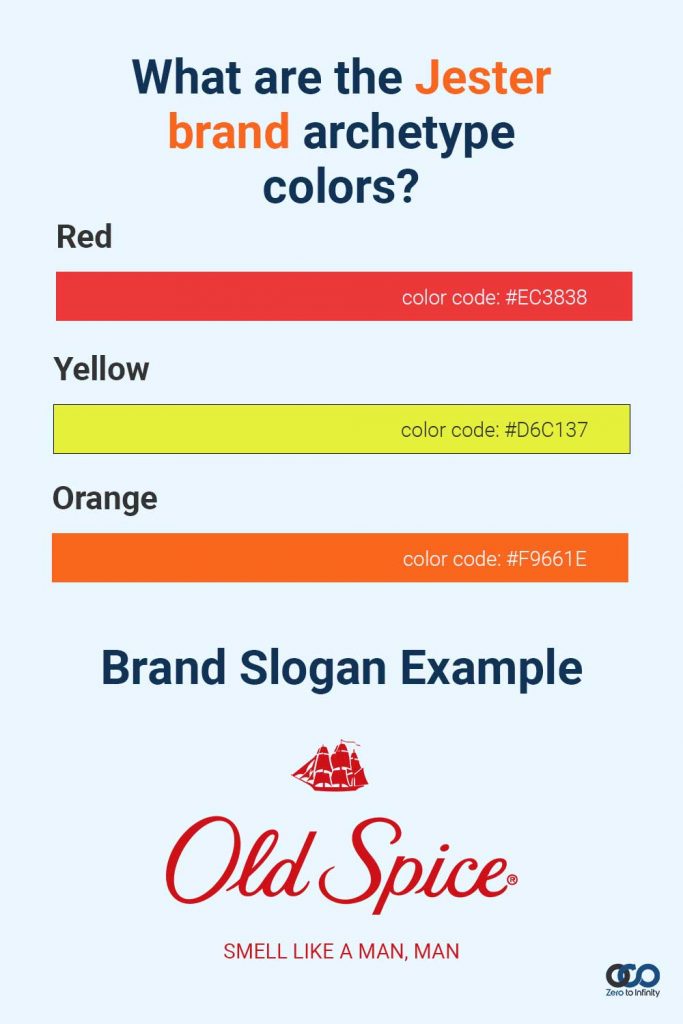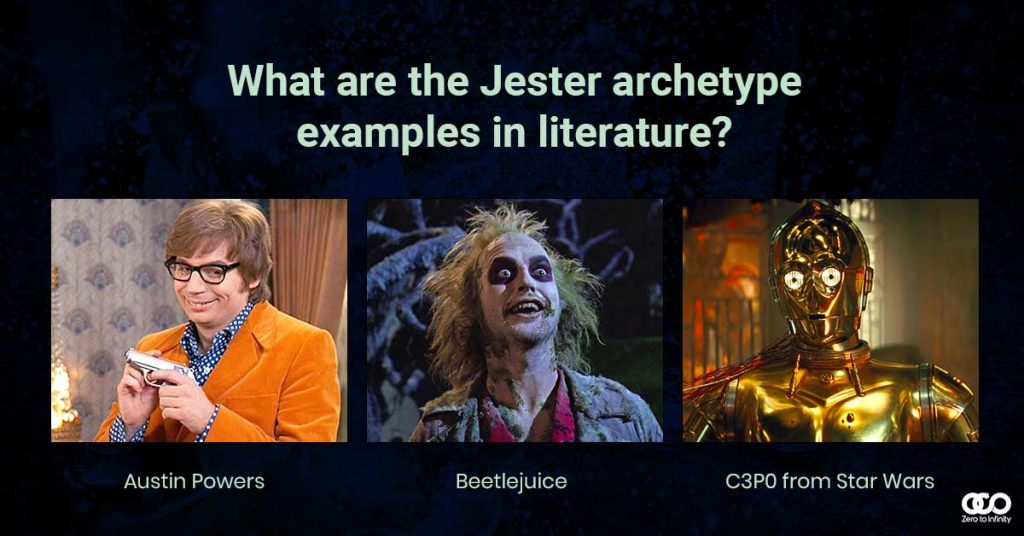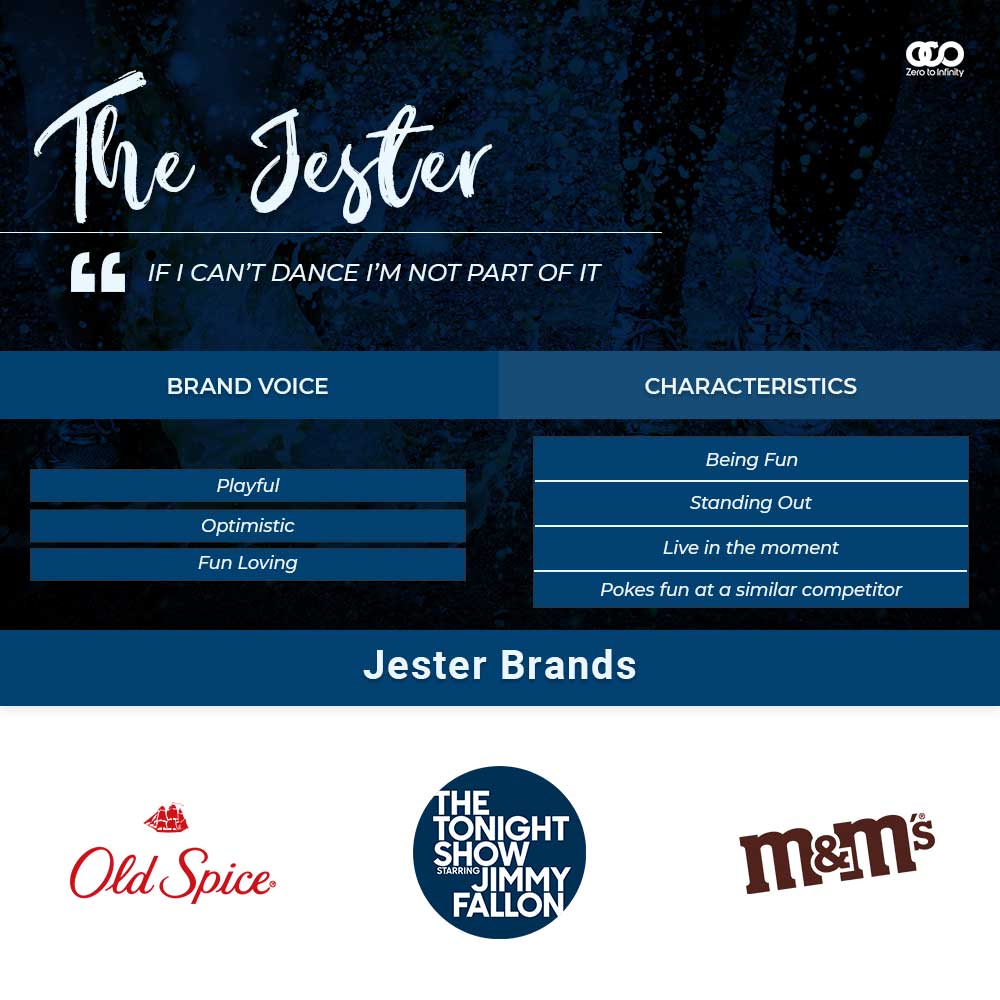Jester Brand Archetype
What is the Jester archetype?
The Jester Archetype represents life here and now. The life of every party, the Jester, needs to make people lighter and relaxed! The Jester permits people to interact with their fun inner kid – impulsive, uncompromising, not afraid, and relaxed with their own skin. The Jester encourages others to break laws.
The Jester is also able to step outside of the box, contributing to new concepts. This means that the Jester is a master at brainstorming, idea reframing, and new opportunities. To illustrate the inherent irony would be to view a social or political agenda in a different way. Comedians are an apparent Jester example, but they are definitely not the only group that defines this archetype.

When you think of the Jester archetype according to Jung, you think of funniness, silliness, thinking outside of the box.
What are the other names for the Jester?
Entertainer
The entertainer is playful, and he caters to the crowd. To give viewers a good performance is all that counts. Fast and highly adaptable, Entertainer requires continuous stimulus and feedback.
Clown
The Clown hides under a mask in order to distinguish himself from critical or taboo subjects in order to discuss them. Highlighting the ridiculous in this manner helps Clown to have fun and have fun at the same time. This sub-archetype is inclined to exaggeration and drama in order to make others laugh.

Provocateur
But it’s with the elegance and charisma that makes it a sub archetype for Jester that the provocateur can be controversial and polarising. The task for the Provocateur, of course, is not to come off as arrogant and insulting. However the provocateur, as a natural communicator and a person’s attitude, induces change.
Shapeshifter
The shapeshifter acts like a camel who can withstand varying situations and phases of consciousness. This sub-archetype makes it impossible for some to call for assumptions and encourage others to interpret them differently. The inherent volatility can be tailored for Shapeshifter’s insecurity.
What are the Jester brand archetype characteristics?
- Being fun
- Live in the moment
- Standing out
- Pokes fun at a similar competitor
- Use of jokes and sarcasm in their messaging
- Use comedy to challenge their rivals
- Fear of being boring
- Fear of being seen as strict
What are the Jester brand archetype colors?
- Orange
- Red
- Yellow

An example is KFC which uses jester archetype colors such as red, black, and white. Red shows cheery, youthfulness, boldness, excitement when you use it for any brand.
What is the Jester brand archetype tone of voice?
Jester’s tone of voice is lively, enthusiastic, and humorous.
What are the Jester brand archetype examples in literature?
Austin Powers
Austin Powers is a clear example of a secondary jester. Austin looks attractive and smooth but the crowd knows better of course. As the main character, you can see how target plots are not suitable; Austin constantly distracts himself and the intensity of the story derives entirely from his satire.
Beetlejuice
The list of Jesters is difficult to make, and Beetlejuice is not included. Beetlejuice pushes the archetype of Jester to the limit — when he is still dead and is willing to do everything to get back with the living, Beetlejuice is again looking for “aliveness” with a cavalier, sometimes perverted, and certainly the intoxicated approach.

C3P0 from Star Wars
You’ve got to feel sorry for C3P0; designed as little more than a Droid interpreter, C3P0 is the brunt of every joke in every language in the arcs of the series that its part of. C3P0 illuminates the bizarre actions both of humans and aliens, certainly, more “foolish” than “jester,” and all of us enjoy it for that.
Fat Amy from Pitch Perfect
Fat Amy is an interesting character in that she turns on her head the hypocritical norm of acapella society of which she performs. Fat Amy flips fat = nervous. However, her humor is becoming a barbed shield for those who want to get closer to her (such as the opposing acapella group leader).
What are the Jester archetype examples (brands)?
M & M’s
M&Ms, the most beloved American candy, reached a peak that has been a staple since the war in the early 1990s.
The BBDO advertising agency was interested in shaking things and made its debut in the Super Bowl with simplicity focused on the colors, each with its own funny properties.
Today, M&M continues to make use of laughter as a ray of sunshine on public occasions to hold the company in its top spot.
Old Spice
Since 1937, Old Spice has been a brand with a long history.
In the nineties, it was known as the core of the path, a medium-aged brand, which needed to change its direction.
Via their personalities, old spice shifted course.
They maintained their initial masculine attributes, but incorporated a strong dose of satire and attracted younger generations.

Jimmy Fallon
Though Jimmy Fallon has an appeal from Everyman, he wants to have fun first and foremost. If Fallon never told you why he is doing what he’s doing here he summarises his goal:.”..if anyone’s hurting at all, that’s my task. To make you laugh, I’m here. He is “making you laugh and placing a smile to your face, so you might… enjoy a longer existence. Isn’t that the aim in everything that we are doing — having fun?” “I want you to have a good time.”
What are Jester customers like?
Jester customers are usually younger people, while people of all ages still appear to be “young at heart.” They are of course, young. Jester buyers are put off by serious subjects or by individuals who are too serious, so their behavior is close to that of carpe diems. You’re trying to stop doing dull stuff, although that’s necessary.
Summary
Can your brand help people survive or love life? Have you a culture of fun? Is it a subtle or odd way to make people see things differently? If so, you might be a Jester.



